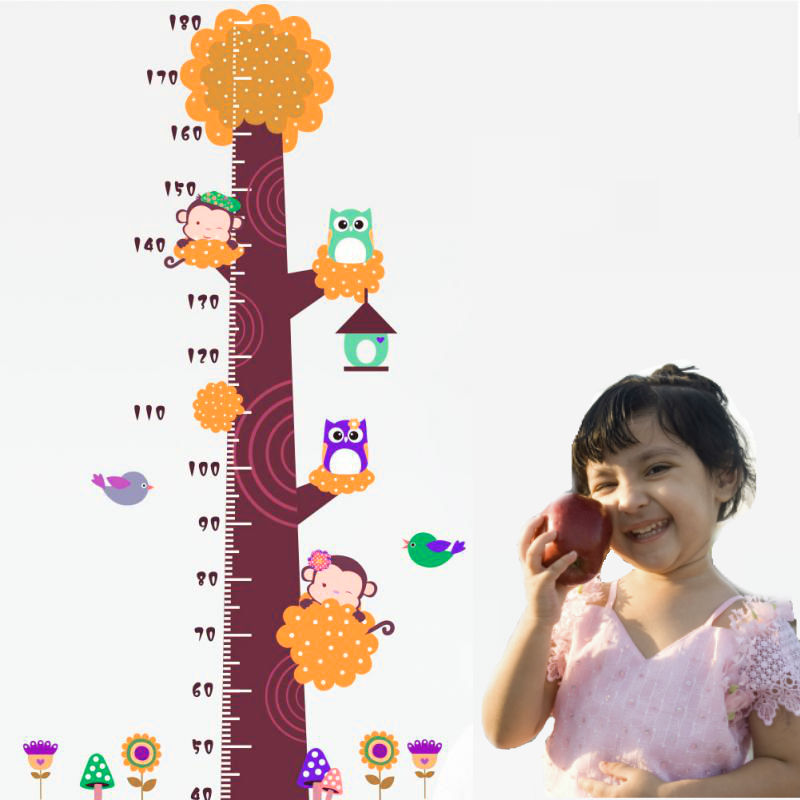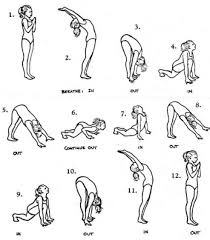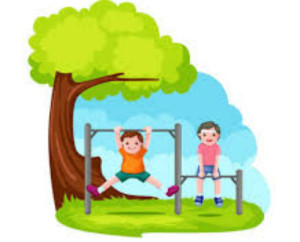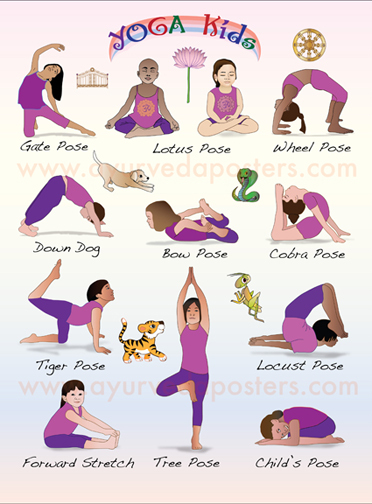Average height and weight chart of Indian boys and Girls at different ages from Birth to 18 years. The Weight in Kilograms (Kg) & Height in Centimeters (cm). This Chart is Approved by the Govt. of India Medical Advisory Board Delhi HQ .
If Chart does not match with your child, then you should check kids daily intake of food and nutrients diet given by you.
Here is the Chart for Boys and Girls Starts from Age 4 for Height and Weight.

Height and Weight Chart for Indian Kids
Lots of parents wonder whether their child is bigger or smaller than other kids the same age. Remember, the baby’s birth weight is the starting point for growth. Whatever be the birth weight of a baby, the growth rate in all the babies is approximately the same. The overall growth pattern depends on the proper food and adequate care of the baby.
Getting taller is also included in the growth pattern of the baby. Weight gain is not the only way to assess a baby’s growth. Whatever be the baby’s length at birth, approximately 2 cm (3/4”) will be gained each month or just over 5 cm (2”) in 3 months.
There is a consistent relationship of weight & height in the normal growth pattern of the child.
To give you a benchmark, given below is an Average Height & Weight Chart for Indian Boys & Girls at different ages.
1 Feet = 12 Inches
1 Inch = 2.5 cm
So 1 Feet = 30 cm
Further, here is an Average Height to Weight Ratio Chart for Girls & Boys:
Source: http://www.disabled-world.com/artman/publish/height_weight.shtml
As In Above Chart Weight is given in pounds so you can covert into Kg as per Indian weight standard.
Here is the example of Height Chart which you can make on Your Home Wall so whenever you want you can take height of your kids and compare with weight chart provided by us.
In the above chart, the weight is measured in pounds so you can convert it into Kgs as per the Indian weight standard, using the convertor below:
You can also put up a height chart at home, to keep track of little one’s growth spurt.
Using our ideal body weight chart, you can calculate your child growth and check her appropriate weight and height.
5 Great Tips to Increase your Child’s Height
Height is one of the essential factors which determine the overall personality of an individual. Every child wants to reach a standard height. Increasing height is easier for the kids compared to adults. Therefore, it is an ideal time for your child to gain height.
Here are some useful and effective ways given below that can help your child increase his/her height:
- Proper Sleep
Proper sleep and rest are essential for a growing body. As growing children and teenagers, your child should have at least 8 to 11 hours of proper sleep every night in order to reach their maximum height.
- Regular Exercise and Sports
One of the best tips for your child to grow height naturally is by being physically fit and active. Regular exercise and sports can enhance your child’s height. Indulging in sports like swimming, aerobics, tennis, cricket, football, basketball or stretching exercises are a good way to keep their body growing. Hanging exercises can also be useful to grow your child’s height through exercise.
- Yoga
Yoga is a great way to increase your child’s height naturally. Certain yoga poses facilitate the release of growth-inducing hormones in the body. The stretching and balancing exercises involved in yoga will help to strengthen their muscles and improve their body’s posture as well.
- Maintaining the Correct Posture
You should encourage your child to maintain a correct posture from childhood. Simple things like sitting straight on a chair, keeping their shoulders straight, chin high, and hips over their feet while walking or standing can actually have favourable effects on their height.
- Balanced Diet
A balanced diet is essential for your child’s body to get the proper nutrition. Avoid saturated fats, carbonated drinks and excessive sugar-loaded foods as these can cause a negative impact on their height. You should ensure that your child gets all the vitamins and minerals that their body needs, to grow to their full height. Intake of Vitamin D, zinc, calcium, phosphorus, carbohydrates and vitamins is important for your child’s growth.
The Right Nutrition for your Child’s Height Gain
Physical growth in children happens at a rapid pace. To support this rapid growth, children need nutrients. It is essential that your child’s diet is rich in food groups that have a high amount of the right nutrients so that your child gets all the nutrients that they require for their overall physical growth.
Given below are some important nutrients that must be included in a child’s diet in order to increase their height:
Proteins
Protein is a necessary ingredient in your child’s food to increase their height. Proteins are the building blocks of our body and thus can help increase your child’s height by building various tissues. It is also important for the growth of the hair, muscles, skin and other internal organs of the body.
Sources of Proteins: Milk and milk products (Paneer, Cheese, Curd, Cream etc.), Egg, Fish, Chicken, Pulses, Sprouts, etc.
Calcium
Height and calcium are almost synonymous with each other. Calcium is undoubtedly the most important component of your child’s diet in order to increase their height. It is responsible for development of bones and muscles.
Sources of Calcium: Milk, Almonds, Curd, Broccoli, Beans, Leafy Vegetables, Mushroom, Eggs, Fish, etc.
Vitamins
Vitamin D is vital for the development of strong and healthy bones. It is also required by the body for the absorption of calcium. Apart from vitamin D, other vitamins like Vitamin A, Vitamin B1, Vitamin B2 or Riboflavin, Vitamin C or Ascorbic Acid and Vitamin F are also required for normal growth.
Sources of Vitamins: Fish, Green Vegetables, Meat, Egg Yolk, Citrus Fruits, Butter, Milk, Fruits, etc.
Minerals
Foods containing minerals like Zinc, manganese, iodine, magnesium, calcium, iron, phosphorus, etc. should be a part of your child’s diet, to boost their height.
Sources of Minerals: Abundant in Fresh Fruits and Vegetables, Milk, Meat, Eggs, Yolk, etc.
Top 5 Exercises to Increase your Child’s Height
Parents look for healthy ways to make sure that their kids grow up taller. You should encourage your child to lead an active life and spend more time outdoors rather being glued to the television and computers. With the right diet, postures and a few exercises, it is possible to aid the growth of your child.
So, find below the top 5 exercises that will help your child increase their height:
- Stretching Exercises
Stretching is one of the most effective ways to increase your child’s height. Simple exercises that involve stretching are a must. Make them stand against a wall with their back towards it. Tell them to raise their hands in the air and stretch as far as possible. Then ask them to sit in the same position on their toes and stretch the leg muscles. Toe-touching exercises are also great to elongate the spine and improving posture.
- Hanging Exercises
Hanging exercises are effective in elongating and straightening your child’s spine. Pull-ups and chin-ups are an effective way to promote their growth. This playful exercise can help straighten their spine and elongate their vertebrates.
- Skipping
Skipping is an active exercise that many kids love and can be used as an exercise to increase your child’s height. As they skip, their body stretches and hence, they grow a few inches every time they skip.
- Swimming
Swimming is another great workout to make your child grow taller. It also helps them exercise their entire body, giving them strength and health.
- Jogging
There is no end to the benefits of jogging. To make your child grow taller, encourage them to jog every day. You can accompany them and make it a more enjoyable experience.
Yoga for Your Child’s Growth & Height
A recent study suggests that the parent’s height is an important factor that helps determine a child’s height but attaining a good height is not only about the genes. What they eat, how they live and think are equally important. But, regardless of what they eat and how they live, height growth has never been that easy.
Yoga is a very easy and effective way of healthy living. It relaxes the mind which aids the body in producing the Growth Hormone, which is responsible for the increase in height. It creates suppleness while controlling your breath and stretching your body through its full range of motions, yoga helps in increasing height.
Practicing yoga regularly can help your child grow physically and make their mind calmer. Let’s have a look at some of the postures that can aid your child in increasing their height:
- Talasana
- Surya Namaskar
- Hastottanasana
- Trikonasana
- Parivrtta Trikonasana
- Adhomukha Savasana
- Hastapadasana
- Sukhasana
- Bhujangasana
- Dhanurasana
These yoga techniques can be extremely effective in increasing your height in addition to a range of other health benefits that they offer. Remember, like with any other practice, you must learn yoga the right way from a qualified expert and practice these exercises under the supervision of a yoga practitioner only.
FAQs on Height & Weight of your Child
Q.:My child is much taller or much shorter than average, what should I do?
While there is no definitive answer, it is likely that your child’s height and weight are within the natural variation of the population. If your child’s height is substantially different from what is typical for their age or sex, you may want to discuss this with your pediatrician. Intentional weight gain or loss is not recommended for infants and children, as it is often not lasting, healthy, or sustainable. You may want to consult with a pediatrician about your child’s weight if it appears to be outside of the normal range or if you are concerned about their health or development.
Q.:What are some common signs that my child is not maintaining a healthy weight?
Some common signs that a child is not maintaining a healthy weight include being overweight or obese, having a large waistline, being pre-diabetic or diabetic, having high blood pressure, and having high cholesterol.
Q.:What are some common signs that my child is not getting enough exercise?
Some common signs that a child is not getting enough exercise include being inactive, having a low BMI, and having a fat distribution that is abnormal.
Q.:What is a healthy weight for a child?
Many parents are unsure of what is considered a healthy weight for their children. This can be difficult to determine, as there is no set definition. In general, however, the Centers for Disease Control and Prevention (CDC) recommend that children between the ages of 2 and 19 years weigh not more than 85% of their ideal body weight and not less than 75% of their ideal body weight. When is it time to worry about a child’s weight? The time to worry about a child’s weight is when their BMI (Body Mass Index) is greater than 95th percentile. A child’s BMI is calculated by taking their weight in kilograms and dividing it by their height in meters squared. If a child’s BMI is greater than the 95th percentile, it is a sign that they are at risk for developing health problems such as obesity, heart disease, and type II diabetes. It is important to keep in mind that a child’s weight is not always a good indicator of their health. For example, a child who is very tall for their age may not have a BMI that is high for their age, even if their weight is high. Similarly, a child who is very short for their age may have a BMI that is high for their age, even if their weight is low.
Q.:What are some things parents can do to help their children maintain a healthy weight?
Parents can help their children maintain a healthy weight by providing them with a healthy diet and physical activity. Parents can also help their children learn how to use calorie calculators and track their food intake to help them stay on track.
Q.:Do taller babies weigh less?
The truth is that the weight of a baby is not directly related to their height. While some babies may weigh less due to their height, other babies may weigh more due to their size and composition. Babies of all heights are affected by the same general factors – genetics, diet, and environment – so the differences in their weight are due to these differences, not to their height. Still, some people believe that taller babies weigh less because they have less muscle mass and fat, which makes them lighter. However, newborns have a lot of muscle and fat, so a baby’s weight can also be due to their size and composition (including their age and sex). In any case, it’s important for parents to monitor their baby’s weight and let them gain weight in a healthy way. Babies who are healthy and grow at a good rate will typically weigh the same as other babies of their age and sex.
Q.:How can parents successfully raise their children to be tall?
Some general tips that may help include: -Encouraging a healthy diet that includes plenty of fruits and vegetables. -Regular aerobic exercise. -Providing a stable, supportive environment where children can exercise their imaginations and explore their surroundings.
Q.:Does parents height affect children’s height?
Ever hear the saying ” genetics play a big role”? Well, scientists have long believed that there is some truth to this statement. While it is still not entirely clear how much genetics play into height development, new research suggests that parents’ height may play a role in their children’s height. A study published in the journal Pediatrics in 2009 looked at data from a Danish cohort of more than 9,000 children born in 1958. The study found that there was a statistically significant correlation between parental height and their child’s height. Specifically, children who were shorter than their parents were more likely to grow to be shorter adults.
On the other hand, children who were taller than their parents were more likely to grow to be taller adults. The study’s authors hypothesized that parental height affects child growth because taller parents tend to provide their kids with morenutrition and physical activity than shorter parents.
Additionally, taller parents are more likely to have children who are taller themselves, which leads to a “tall gene” syndrome in the children. While the study’s results are preliminary, they offer a new perspective on height development.
Considering that parental height is largely determined by genetics, it makes sense that it would play a role in how tall a child becomes.
You can use the simple formula below to estimate the potential height of the child or the mid parental height:
Boys: (father’s height + mother’s height) / 2 + 6.5 cm +/- 8.5 cm
Girls: (father’s height + mother’s height) / 2 – 6.5 cm +/- 8.5 cm
Q.:how to increase my child’s weight and height?
Nurture Activity
One of the best ways to achieve healthy weight and height is to encourage your children to be active. Playing games, going on walks, and biking are all great ways to get your children moving, both physically and mentally. This can help to reduce their chances of becoming overweight or obese and can even help them learn coordination and problem solving skills.
Encourage a balanced diet
Making sure your child eats a healthy, balanced diet is also important in achieving healthy weight and height. While junk food is not the best way to boost your child’s weight, making sure they are eating enough fruits and vegetables, lean protein, and whole grains can help to ensure they are getting the nutrients they need to grow and develop properly.
Limit screen time
Like adults, children need time to relax and unwind, and screen time can be a critical way for children to do that. In addition to being harmful to their mental and physical health, excessive screen time can lead to hyperactivity and poor sleep, both of which can have negative effects on a child’s weight and height.
Q.:How do I know if my child’s height and weight are normal?
There are certain things that parents can do to help determine if their child’s height and weight are within the normal range.
When it comes to height, parents can take their child’s standing height and compare it to the average height for their age group. If the child falls within the average range, then it is likely that their height is normal.
BMI Calculator
20.0
Normal weight
It is important to note that a child’s standing height may not be an accurate indicator of theirheight during growth. children may growth in many different directions, so their standing height may not reflect their height in growth.
When it comes to weight, parents can use the body mass index (BMI) to help determine if their child’s weight is within the normal range. The BMI is a statistic that measures a person’s weight in relation to their height. Someone with a BMI of 18.5 or higher is considered to be overweight, and someone with a BMI of 25 or higher is considered to be obese.
If a child’s BMI is within the normal range, then it is likely that their weight is within the normal range. However, it is important to note that not all children will have a normal BMI. There are a number of factors that can affect a child’s BMI, including weight and muscle mass.
So, while the BMI may be an helpful indicator, it is not the only indicator that parents should look at when determining if their child’s height and weight are within the normal range.
Q.:What is the average height and weight of child in India at different ages?
There are, of course, a variety of opinions when it comes to parenting, but, broadly speaking, Indian parents appear to be relatively conservative when it comes to their children’s physical growth and development. In India, the average height and weight of a child at different ages is as follows:
Children aged one to two years: are typically around 44 cm (17 in) and 50 kg (110 lbs), respectively.
Children aged two to four years: are typically around 52 cm (20 in) and 55 kg (120 lbs), respectively.
Children aged four to six years: are typically around 58 cm (23 in) and 60 kg (130 lbs), respectively.
Children aged six to eight years: are typically around 62 cm (24 in) and 65 kg (150 lbs), respectively.
Children aged eight to ten years: are typically around 66 cm (26 in) and 70 kg (160 lbs), respectively.
Children aged ten to twelve years: are typically around 68 cm (27 in) and 75 kg (165 lbs), respectively.
Children aged thirteen to fourteen years: are typically around 71 cm (28 in) and 80 kg (190 lbs), respectively.
Children aged fourteen to sixteen years: are typically around 74 cm (29 in) and 85 kg (205 lbs), respectively.
The average weight of Indian children aged fourteen to sixteen years is 88 kg (198 lbs).
As you can see, Indian children generally grow at a slower rate than children in many Western countries. This is likely due, in part, to the country’s traditional diet – which is heavy in carbohydrates and low in protein – and to the physical activity levels of Indian children.
Nonetheless, Indian children remain relatively healthy and figures from the World Health Organization (WHO) show that the infant mortality rate in India is relatively low – at about 58 deaths per 1,000 live births. This compares favourably with the infant mortality rates in many developed countries, such as the United States (120 deaths per 1,000 live births) and the United Kingdom (100 deaths per 1,000 live births).
There are, of course, a variety of factors that contribute to a child’s healthy development, and it is important not to overweight or underweight a child based on averages alone. That said, it is interesting to note that Indian children tend to be relatively thin when they first enter school, and this may indicate that they are receiving inadequate nutrition during their formative years.
Q.:What are the Major Elements Affecting My Child’s Height?
Parents are always striving to raise their children to their best potential, and ensuring they grow to their fullest potential is a top priority. However, their child’s height can have a significant impact on their overall growth and development. Here are the five key factors that can affect a child’s height:
- Genetics: Height is largely determined by genetics, with about 75% of a person’s height being determined by their parents’ genes. Even if a child experiences difficulties during development, due to deficits in nutrition or other causes, their genetic potential will usually dictate their eventual height.
- Nutrition: Height is directly related to a child’s nutritional intake. If a child is not getting enough nutrients, their bones will not grow as quickly, and their height will likely be impacted. Eating a balanced and nutritious diet is essential for a child’s healthy growth and development.
- Bone Development: Just as a child’s height is related to their nutritional intake, their bone development is also greatly impacted by it. If a child is not getting adequate exercise and calcium supplementation, they will not grow as tall as they could. Bone mass is important for determining a person’s height, and getting the appropriate amounts of nutrients and exercise is necessary for optimal bone growth.
- Environmental Factors: External factors can also have a significant impact on a child’s height. For example, if a child is living in a poverty-stricken area or experiencing homelessness, their growth may be stunted due to the lack of proper nutrition and exercise. Environmental factors can also affect a child’s musculoskeletal system, which can lead to reduced height.
- Health Conditions: A child’s health can also play a significant role in their height. If a child is obese or has certain health conditions, their height may be impacted. Likewise, if a child is deficient in certain key nutrients, such as iron or zinc, their height may be affected as well. It is important to have a child’s health checked by a health professional to ensure their height is optimal and development is on track.
Q.:What can I do now that I know my child is short?
Now that you’ve learned your child is short, there are a few things you can do to help them feel good about their body and build self-esteem.
- Encourage them to express their creativity and imagination. Short kids can be very creative, so encourage them to use their imagination and come up with new ideas and concepts.
- Make sure they have plenty of toys and activities that appeal to their interests and hobbies. Short kids often have a lot of energy and need plenty of activities and toys that they can enjoy doing on their own.
- Stick up for them when they feel embarrassed or self-conscious about their height. When your child feels like they’re not good enough because of their height, encourage them to talk to you about it. You can help them feel better about themselves and build self-esteem by listening and offering support.
Q.:What are the Symptoms of Hyposhroidism in children?
The symptoms of hypothyroidism in children can be significant and can often lead to improper growth. If left untreated, hypothyroidism can lead to decreased lifespan and poorer physical health.
Q.:How does hypothyroidism Affect Children?
Typically, children with hypothyroidism will experience tiredness, dry skin, constipation, and difficulty sleeping. They may also be shorter than their peers and have shorter arms and legs.
There are a number of serious consequences that can result from untreated hypothyroidism in children. These include:
Delayed permanent teeth
Delayed puberty
Decreased lifespan
If you are concerned that your child may be experiencing symptoms of hypothyroidism, it is important to visit a healthcare professional.
Q.:How Can Hypothyroidism Be Treated in Children?
If hypothyroidism is identified in a child early on, treatment can be successful. Treatment typically includes replacement of the child’s thyroid hormone and may also include other medications to help improve symptoms. If treatment is not successful, the child may require surgery to remove their thyroid gland.
If you are a parent of a child with hypothyroidism, be sure to visit a healthcare professional for advice on treatment. You can also find helpful information online.
Q.:What Causes Short Height in children?
Short height in children is a very common problem that parents face. While the cause of short height is not known, there are several factors that may play a role. Here are some possible causes of short height in children:
- Genetics: The cause of short height in children is often a result of genetics. Some children are simply born shorter than others and there is not much that parents or doctors can do to change that.
- Birth Defects: Birth defects can also lead to short height in children. Some birth defects, like Turner syndrome, can lead to a shortened stature. Other birth defects, like developmental delay, can cause problems with the growth and development of the bone and muscle in the body.
- Health problems: Some health problems, like malnutrition, can cause a child to be short in height. Other health problems, like leukemia, can lead to serious tumors that can make the child less tall.
- Obesity: Being overweight can lead to a number of health problems, one of which is short height in children. Obesity can cause problems with the way the body uses energy, which can affect the growth and development of the child.
- Medical conditions: Some medical conditions, like hypothyroidism, can lead to problems with the growth and development of the child.
There is no one single cause of short height in children, and the cause may be a combination of factors. If you are concerned about your child’s height, schedule an appointment with your doctor. He or she can take a look at your child’s medical history and track the growth and development of your child over time.




















hi. i am a 12th class student . i am doing a project regarding survey of height and weight of school students aged 14yrs. please give further info. about your source data for this conclusion.
Great topic.. Thank you for great information I used to be looking for this info for my mission..
HI IM SOUMYA DOING A RESEARCH ON ADOLESCENTS SO I REQUIRE THE NORMAL RANGE OF WEIGHT AND HEIGHT FOR THE ADOLESCENTS AGED 12- 17 YRS.
I leave a comment whenever I like a article on a website or I have I actually do have 2 questions for you if you don’t mind.
I actually do have 2 questions for you if you don’t mind.
 And, if you are writing on other places, I would like to keep up with you.
And, if you are writing on other places, I would like to keep up with you.
something to add to the conversation. It is triggered by the sincerness
communicated in the article I read. And on this post Average Height and Weight chart for Indian Boys and Girls | Blog: SHEMROCK Group of Schools.
I was actually moved enough to post a commenta response
Is it only me or does it appear like some of these comments come
across as if they are written by brain dead visitors?
Would you make a list all of your social pages like your
twitter feed, Facebook page or linkedin profile?
You can suggest your recommendations here itself..
I wanted to thank you for this great read!! I absolutely enjoyed every little bit of it.
I have you bookmarked to look at new stuff you post..
Heya i am for the first time here. I came
across this board and I find It really useful & it helped
me out a lot. I hope to give something back and help others
like you aided me.
Thank you for the good write-up. It in fact was a amusement account it.
Look advanced to more added agreeable from you! By the way, how can we communicate?
I really like it whenever people get together and share views.
Great website, keep it up!
Ahaa, its pleasant conversation on the topic
of this article here at this webpage, I have read all that, so now me also commenting at this place.
It’s very easy to find out any topic on net as compared
to textbooks, as I found this paragraph at this web site.
I absolutely love your blog and find nearly all of your
post’s to be just what I’m looking for. can you offer
guest writers to write content for you personally?
I wouldn’t mind writing a post or elaborating on a lot of the subjects you write about
here. Again, awesome blog!
Hello, just wanted to say, I liked this post. It was inspiring.
Keep on posting!
can i have the chart at different ages please?
I like what you guys tend to be up too. This sort of clever work and exposure!
Keep up the great works guys I’ve included you guys to my personal blogroll.
Hi there! I just want to offer you a big thumbs up for the
excellent info you’ve got here on this post. I’ll be returning to your site for more soon.
Hi, I do believe this is an excellent site. I stumbled upon it I’m going to return once again since i have book
I’m going to return once again since i have book
marked it. Money and freedom is the greatest way to change,
may you be rich and continue to help others.
Hi, I am an Assistant Professor and doing research on nutritional status of school going children. kindly help me to know the followings things:
1. what is reference mean height & weight.
2. what are the mean weight & height for Indian Children.
hi!,I love your writing so so much! share we keep up a
correspondence extra about your post on AOL? I need an expert on this area to unravel
my problem. Maybe that’s you! Taking a look forward to look you.
hi my 2.6year old baby s 19kgs is that overweight… I feel so can somebody please suggest me Wat has to be done… since I m obesis I don’t want my daughter to be like that
hi I m anandhi..
my 2.6year old baby s 19kgs is that overweight… I feel so can somebody please suggest me Wat has to be done… since I m obesis I don’t want my daughter to be like that …
Nice article sir please upload more sir
If you are a gym guy, you will most often see other men putting on a costume completely inappropriate for decide the financial activity
however doing, here are quite a few you needs to know if you avoid finding yourself in the same situation.
Sometimes, wearing unsuitable clothes may result in getting injured and can simply need to be
attentive into the kind of garments you wear when pay a visit to the
wellbeing club.
Please put your things away. Dumbbells, stability balls, bands –
these are your toys and need to be able to put away when you’re done these people.
We are typically very impressed that you are able to bench 325 pounds.
Now impress us even more by stripping the bar and restacking
the discs.
A nightmare to both gym instructors and members alike, the Bullies are difficult to fail
to see. Walking around with arms flaring out as if there are potatoes
in their armpits, these oversized muscle heads share many
characteristics with the Hogger along with the Moaner.
Make use of your equipment between sets without asking and they never return any with
the weight correctly.
Appropriate Gym Clothes: Bring comfortable fitting clothes for every good bodybuilding routine.
Stretchy materials that will breathe and move with you. No jeans and no street shoes.
Fashion aside for a moment, today’s activewear brands offer
a lot of new extras. Companies use fabrics that wick away sweat clothes gym of this body whilst keeping you dry throughout your exercise.
Activewear fabrics breath wonderfully and move
utilizing body, making it possible to feel cool and your clothing in order to maneuver
effortlessly an individual do. Also, the activewear fabrics
frequently colorfast, so wash after wash the shades stay light!
You can’t predict when fate is in order to be play a hand, so always be prepared!
You could meet the person of your dreams coming off the elliptical.
The health club is a good place meet up with someone who shares similar interests.
When dealing with any on the five annoying people
above, the main thing to note is, keep in mind to be polite.
Never use aggression even though you are bigger and stronger than one other guy.
Treat fellow gym users with respect an individual will get
respect inturn.